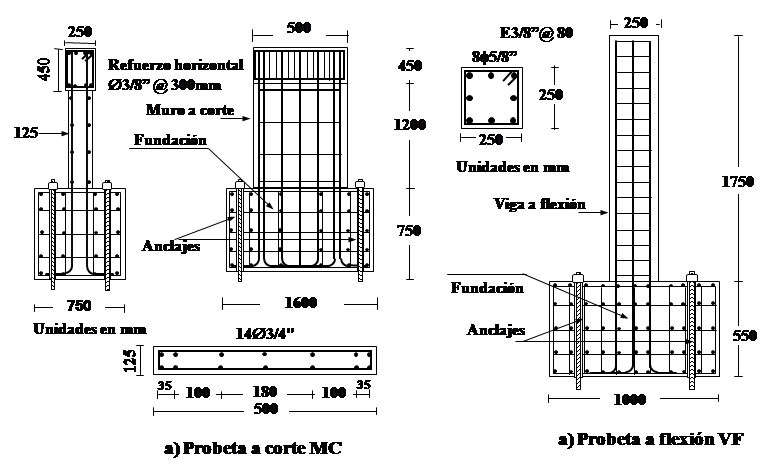Experimental study of low cycling fatigue in armed concrete elements due to flexion
DOI:
https://doi.org/10.13140/RG.2.2.27595.49447Keywords:
lender elements, bending failure, low cycling fatigue, reinforced concrete elements, crack propagationAbstract
In this work, an experimental study of low cycling fatigue in reinforced concrete elements with dominant flexural behavior is developed. The reinforced concrete elements are subjected to cycles of displacement until rupture. A total of two bending beams were tested. In each cycle, the degradation of the resistance and rigidity due to the effect of low cycling fatigue is evaluated. Preliminary results and observations are presented and discussed. The tests are relevant to develop an analytical model of non-linear behavior that describes the degradation of strength and rigidity of reinforced concrete structures subjected to severe earthquakes
Downloads
References
G. Penelis y A. Kappos, “Earthquake-Resistant Concrete Structures” Francis and Taylor, London, UK, 1997
J. B. Mander, A. Dutta y C. T. Cheng, “Capacity Detailing of Columns, Walls and Piers for Ductility and Shear” In NCEER Bulletin, vol 11 (2) US National Center for Earthquake Engineering Research, 1997
J. Brown y S. K. Kunnath, “Low-cycle fatigue failure of reinforcing steel bars” ACI materials journal, vol 101(6), 457-466, 2004
R. C. Borg, T. Rossetto y H. Varum, “Low Cycle Fatigue Tests of Reinforced Concrete Columns and Joints, Built with Ribbed Reinforcement and Plain Stirrups” In 15th WCEE, World Conference on Earthquake Engineering, September, 2012
A.A Griffith “The phenomena of rupture and flow in solids” Phil. Trans. Roy. Soc. Lond, A221, pp. 163–198, 1921
M. E. Perdomo, R. Picón, M. E. Marante, F. Hild, S. Roux y J. Florez-Lopez “Experimental analysis and mathematical modeling of fracture in RC elements with any aspect ratio” Engineering Structures, vol 46, pp 407-416, 2013
M. Puglisi, “Fallas por fatiga en estructuras de concreto armado” Tesis de Maestría en Ingeniería Estructural, Universidad de Los Andes Venezuela, 1994
E. Thomson, A. Bendito y J. Flórez-López, “Simplified model of low cycle fatigue for RC frames” Journal of Structural Engineering, vol 124 (9), pp. 1082-1085, 1998
M. E. Perdomo, “Fractura y Daño en Estructuras Duales de Concreto Armado” Tesis Doctoral, Universidad de Los Andes, Venezuela, 2010

Published
How to Cite
Issue
Section
The opinions expressed by the authors do not necessarily reflect the position of the editor of the publication or UCLA. The total or partial reproduction of the texts published here is authorized, provided that the complete source and electronic address of this journal is cited. Authors have the right to use their articles for any purpose as long as it is done nonprofit. The authors can post on the internet or any other media the final approved version of their work.






.png)




